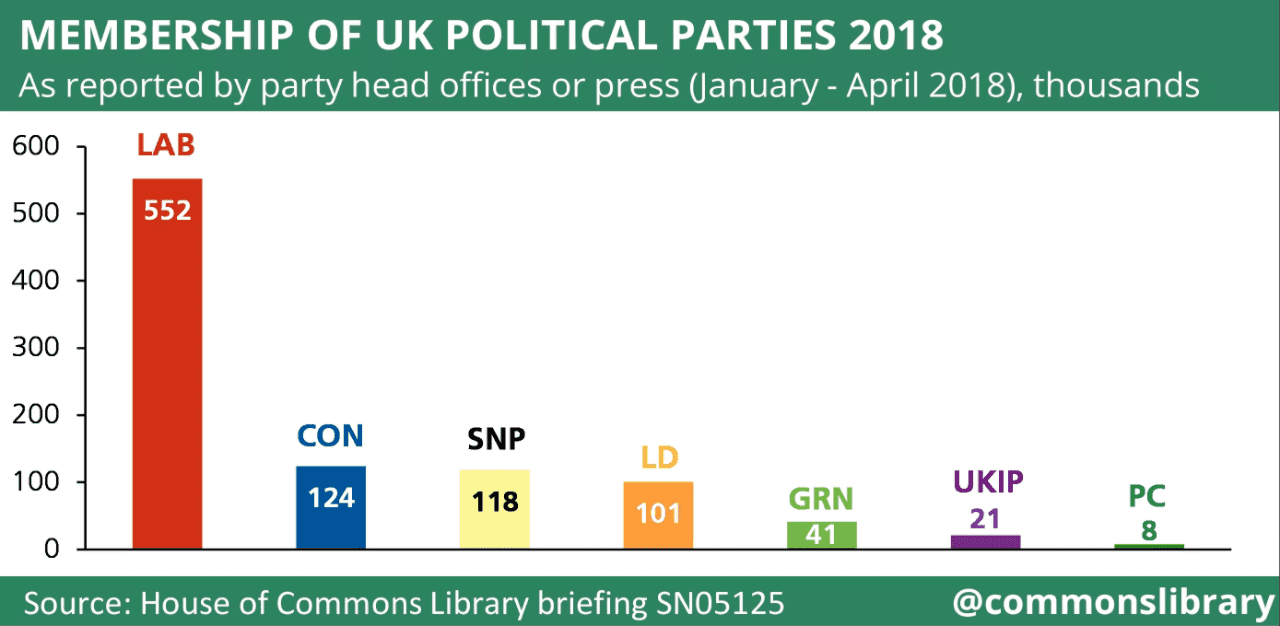The results of the election may have been mixed, but the message from the latest release of party membership figures is anything but. And it’s very bad news for the Conservatives.
Party membership
On 2 May, the House of Commons published its latest data on party membership. According to recent estimates, it says:
- The Labour Party has around 552,000 members, as of January 2018
- The Conservative Party has 124,000 members as of March 2018
- The Scottish National Party has around 118,200 members, as of April 2018
- The Liberal Democrat Party has around 100,500 members, as of April 2018
- The Green Party (England and Wales) has 41,073 members, as of April 2018
- UKIP has around 21,200 members, as of April 2018
- Plaid Cymru has around 8,000 members, as of April 2018
This means that Labour has more than four times the number of members in its party than the Conservatives, and more members than all of the parties combined.

A worrying trend for the Tories
Since 1970, Conservative Party membership has been collapsing, as the graph below shows:
Here you can see the trends in membership since 1970, when the Tories membership accounted for 3 per cent of the entire electorate. pic.twitter.com/VZvu4ZmSK9
— Ashley Cowburn (@ashcowburn) May 2, 2018
Collapsing membership matters. As the Party Membership Project emphasises:
membership is vital for the health of our representative democracy. Members contribute significantly to the election campaigns and to party finances. They are people who pick party leaders.
Former Conservative chair Grant Shapps once said that the party’s refusal to be honest about its falling membership was “embarrassing”. We can now see why the party has been so reluctant to share that information. The latest figures show a party in decline.
Get Involved!
– Join us, so we can keep bringing you the news that matters.
Featured image via EU2017EE Estonian Presidency/Flickr















